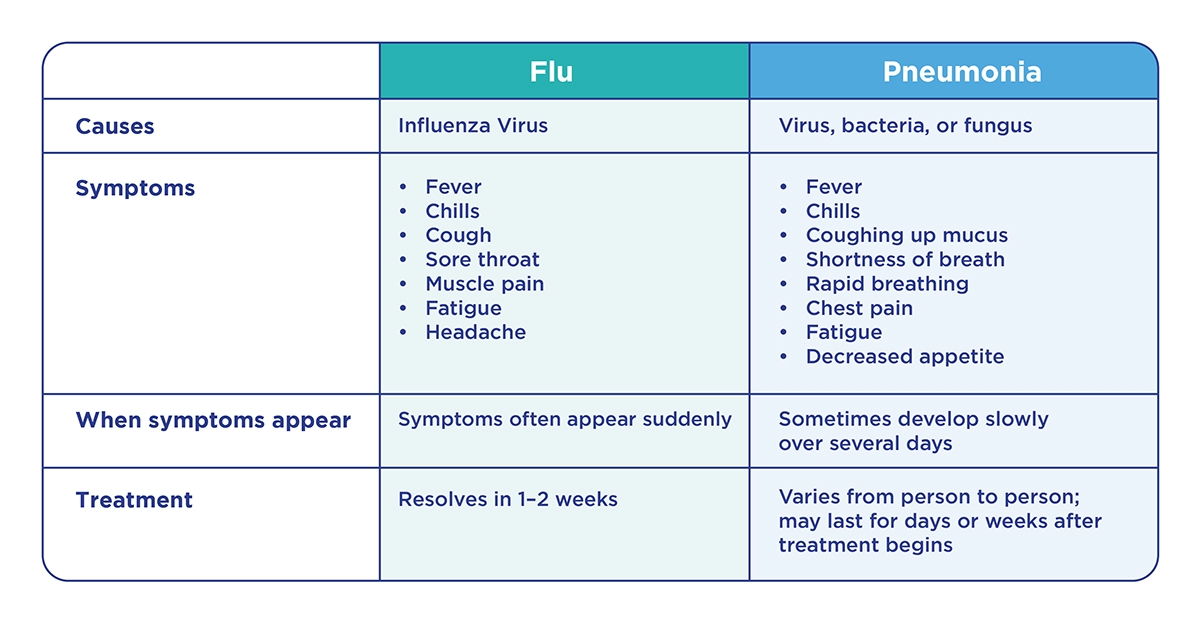Flu vs. Pneumonia: Differences, Symptoms, and How to Prevent Them

Artist Barbie Hsu died after being infected with the influenza virus in Japan. She is suspected of having a severe flu that developed into a serious complication of pneumonia.
After this incident, several countries warned their citizens to postpone traveling to Japan due to the increasing number of pneumonia cases.
In Indonesia, pneumonia cases increased significantly in 2024. There were 1,278 cases recorded, with 188 deaths, an increase of more than threefold compared to the previous year, which only recorded 30 cases with 52 deaths. Even in January 2025 alone, there were 105 cases with 12 deaths.
What is the difference between influenza and pneumonia?
Flu and pneumonia are respiratory infections that can cause coughing and breathing problems. However, there are some key differences in symptoms and treatment.
Meanwhile, pneumonia is an infection caused by viruses, bacteria, or fungi and causes inflammation of the air sacs in one or both lungs. The air sacs can fill with pus or other fluids, preventing oxygen from reaching the bloodstream.
If the oxygen in the blood is too low, the body cannot function properly, which can interfere with organ function and eventually lead to death.
Both the flu and pneumonia are respiratory infections that can cause coughing and breathing problems. However, there are significant differences in symptoms and treatment.

Can the flu progress to pneumonia?

Yes. Especially in kids, the elderly, pregnant women, or those with certain chronic health conditions. In addition to pneumonia, the flu can cause bronchitis, ear infections, heart issues, asthma attacks, meningitis, and encephalitis.
The flu can lead to pneumonia in two ways: direct infection (pneumonia virus) of lung cells and secondary infection, along with several risks that follow.
Some signs that the flu has progressed to pneumonia:
- Difficulty breathing
- Chest pain
- Chest tightness
- Fever that does not subside after 7-10 days
How to prevent flu and pneumonia
To reduce the risk of infection, take the following steps:
- Vaccination to protect the respiratory tract, such as the influenza and pneumococcal vaccines.
- Maintain your immune system by eating nutritious foods and getting enough sleep.
- Maintain cleanliness by washing your hands regularly with soap, especially after coughing or sneezing.
- Avoid direct contact with infected people.
- Quit smoking because it can damage lung tissue.
- Consult a doctor immediately if you have a cough and fever for more than five days accompanied by shortness of breath.
Vaccination: protection against flu and pneumonia

Both flu and some types of pneumonia have vaccines that can help protect against infection.
1. Influenza vaccine
Given every year to protect against the latest flu viruses. The influenza vaccine protects against four types of influenza viruses:
- Influenza type A (H1N1)
- Influenza type A (H3N2)
- Influenza type B (Victoria)
- Influenza type B (Yamagata)
2. Pneumococcal vaccine
The pneumococcal vaccine protects against infection with the bacteria Streptococcus pneumoniae which can lead to pneumonia, meningitis, and other serious infections. There are two types of vaccines available:
a. Pneumococcal Conjugate Vaccine (PCV)
Based on the number of bacterial strains it protects against, the conjugate pneumonia vaccine comes in several types, including PCV13, PCV15, and PCV20. This vaccine can be administered to infants, children, and adults who are at high risk of infection.
Recommended dosage
1. Infants (2–15 months old): 4 doses
- Administered at 2 months, 4 months, 6 months, with at least a 4-week interval between doses.
- The first dose can be given as early as 6 weeks of age, and the fourth dose is given between 11–15 months.
2. If the PCV vaccine has never been given:
- Ages 7–11 months: 2 doses, with a minimum 1-month interval, plus a booster after 12 months of age, with at least a 2-month interval from the previous dose.
- Ages 1–2 years: 2 doses, with a 2-month interval between doses.
- Ages 2–5 years: 1 dose is recommended.
3. Adults: 1 dose, lifetime protection.
b. Pneumococcal Polysaccharide Vaccine (PPSV23)
Protects against 23 types of bacteria that cause pneumonia and is given from the age of 19 years to the elderly.
- Dosage: 1 injection.
- Effectiveness: Valid for 5 years.
Adults who have received the PCV13 can receive the PPSV23 vaccine at an 8-week interval. If they have already received the PPSV23 vaccine, they can receive the PCV13 vaccine after a one year interval.
This pneumococcal vaccine is recommended especially for high-risk individuals, such as infants, the elderly, and those with chronic diseases or weak immune systems.
**
By recognizing the difference between flu and pneumonia and taking preventive actions, we can protect ourselves and others around us from the risk of serious complications.
Don't wait until it's too late! Protect yourself and your family with influenza and pneumococcal vaccinations at the GWS Medika Clinic. Please contact us now if you need additional information.



